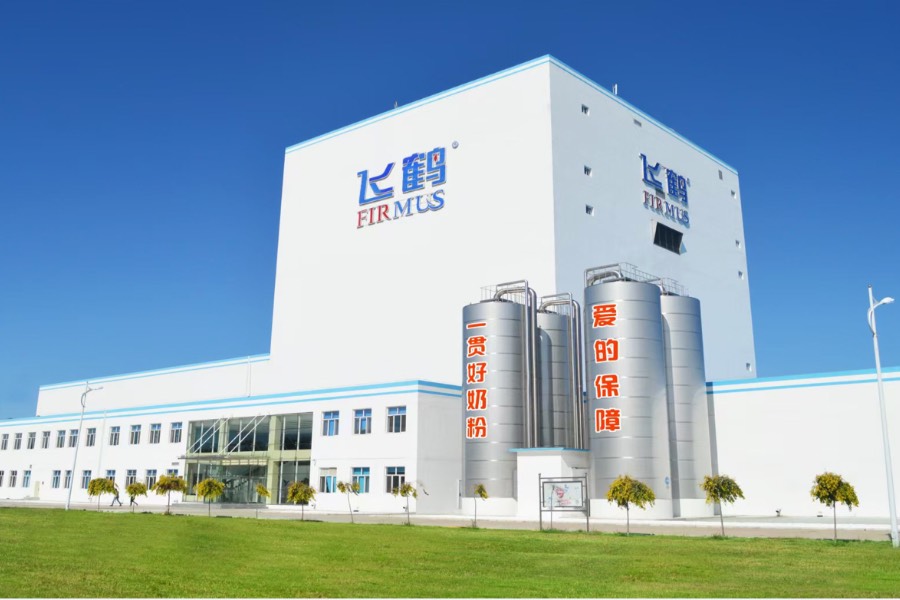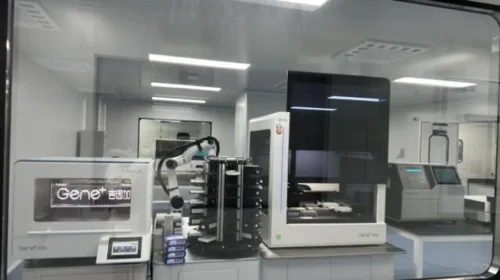Feihe’s sliding profits point to China dairy market past its sell-by date

Declining birth rates and China’s slowing economy are taking a toll on the company and its peers as they grapple with oversupply and asset impairments on excess inventory
Key Takeaways:
- China Feihe said its profit slid over 30% in the first half of 2025 on increased subsidies and asset impairments as it works to clear out its inventory
- Despite the gloom, the leading infant formula maker’s darkest days could be behind it as China’s declining birthrate shows signs of stabilizing
By Cheng Shui Tong
China Feihe Ltd. (6186.HK) isn’t crying over spilt milk, but rather is taking a more practical approach to clear out inventory in an oversupplied Chinese dairy market.
The leading infant formula maker warned earlier this month it expects to report that its profit slid more than 30% to between 1 billion yuan ($140 million yuan) and 1.2 billion yuan in the first half of 2025, from 1.9 billion yuan in the year-ago period. It blamed the decline on childbirth subsidies it provided to consumers, its efforts to clear out infant formula inventories, impairment losses on whole milk powder products, and reduced government grants.
Feihe has been China’s leading infant formula maker for five consecutive years and reigned over the global market for three years, reflecting the massive size of the Chinese market. But its overreliance on the infant formula segment, which contributes over 90% of its revenue, has become a major Achilles heel. It has tried to address that weakness with a diversification drive in recent years, but has yet to achieve much success.
The company is hardly the only one suffering in China’s broader dairy industry. A couple of weeks earlier, raw milk producer Modern Dairy (1117.HK) also warned that its loss widened to between 800 million yuan and 1 billion yuan in the first half of 2025, from a 200 million yuan loss a year earlier. It blamed the deterioration on fair value losses on its dairy cows, estimating that figure could reach up to 1.85 billion yuan.
As a milk producer, Modern Dairy’s core asset is its dairy herd, with more than 490,000 cows on its books by the end of last year. But its proactive culling of lower-yielding cows and declining raw milk prices undermined the fair value of its herd.
Parade of profit declines
The first-half profit warnings extend woes facing China’s dairy industry over the past year. Sector leader Mengniu’s (2319.HK) profit plunged 98% to just 105 million yuan last year, as impairment losses on goodwill and intangible assets related to an earlier acquisition slurped up most of its profits. Losses from Modern Dairy, in which Mengniu holds a major stake, also played a part.
Mengniu’s woes highlight a major supply-and-demand imbalance consuming China’s dairy industry after years of strong growth. The company’s revenue fell 10% year-on-year in 2024, as dairy consumption nationwide fell short of expectations. Despite its industry-leading status, Mengniu’s shares have been weak performers amid the sector’s recent woes. Its primary revenue source, liquid milk products, accounted for 82.4% of its revenue in 2024.
Clearly, companies across the Chinese dairy value chain, from raw milk producers to infant formula makers and liquid milk processors, are under significant pressure, as a downturn consumes sector. The industry once thrived on strong population growth, a booming economy and increasing acceptance of dairy products in a society where such products were once few and far between.
But that tailwind has finally reversed. A primary culprit is China’s declining birth rates, which are reducing demand for dairy products. The problem has worsened in recent years, with data from the National Bureau of Statistics (NBS) showing the nation’s birth rate dropped from 10.48 per 1,000 people in 2019 to just 6.77 per 1,000 last year. The population of children ages 0 to 3 also fell dramatically from 47.2 million in 2019 to 28.2 million in 2024.
The dramatic decline in infants and toddlers has led to oversupply of infant formula and other dairy products targeting young children. As that happened, the average price of raw milk in China plunged 30%, from 4.4 yuan per kilogram in 2021 to 3.1 yuan by the end of last year. Companies that expanded during the boom are now grappling with excess supply and are lowering output to suit the new reality. NBS data indicated China’s raw milk production in 2024 was approximately 40 million metric tons, down 2.8% year-on-year, marking the first decline in seven years.
Alarmed by the falling birth rate, Beijing has scrapped its one-child policy and begun encouraging people to have more children. Those efforts may be starting to bear fruit, as the 9.54 million newborns last year ended a seven-year decline. But the number of deaths in China has exceeded 10 million each year, causing the total population to keep shrinking.
Many Chinese cities have joined the national campaign to encourage bigger families by rolling out their own supportive policies. One example is the Inner Mongolia city of Hohhot, which in March announced that families with one child would receive a 10,000 yuan subsidy, while two- and three-children families would receive 50,000 yuan and 100,000 yuan, respectively. Such local policies often spark rallies for dairy stocks fueled by short-term speculators. But truly changing the current preference for smaller families could be difficult in the short term.
Emerging from the trough
While demand for infant formula is falling, growing wealth and health awareness among China’s new middle class are driving demand for dairy products among the country’s adults. China’s annual per capita dairy consumption stood at about 18 kilograms in 2023, only two-thirds of the global average, suggesting room for additional growth. However, differing dietary habits mean China is unlikely to reach the European dairy consumption level of over 30 kilograms per capita anytime soon.
China’s aging population is also expected to boost demand for senior nutrition formula, potentially offsetting some of the decline in the infant segment. Such factors offer hope for some potential relief for the broader dairy market.
Of the Hong Kong-listed Chinese dairy stocks, Feihe trades at a trailing price-to-earnings (P/E) ratio of around 11 times. Mengniu’s trailing P/E stands at a meteoric 550 times due to its poor profit last year, but the figure is expected to come down to around 10 times this year as its profits return to more normal levels. Many of the other producers are losing money.
Facing falling demand and overcapacity, most dairy companies have been aggressively destocking and taking asset impairments in the last year, which is reflected in their most recent results. Worried investors have pushed the group’s valuations to relatively low levels, suggesting the industry may soon reach bottom. But while a rebound may be coming, the sector’s shifting fundamentals mean producers are unlikely to return a golden high-growth era of the past anytime soon – if ever.
To subscribe to Bamboo Works weekly free newsletter, click here





